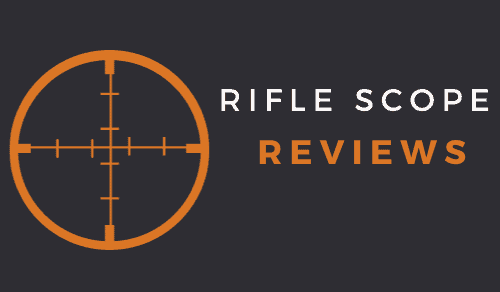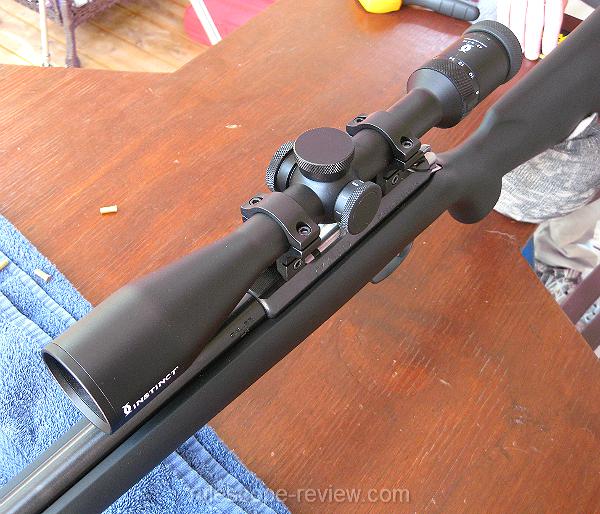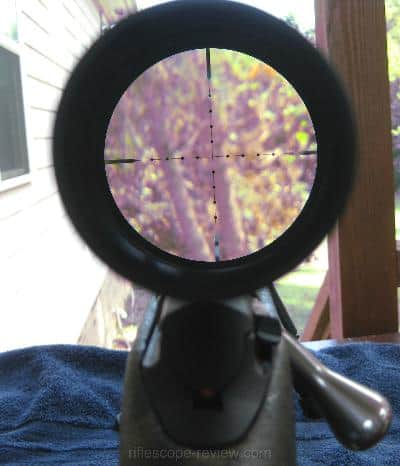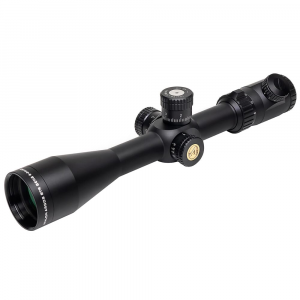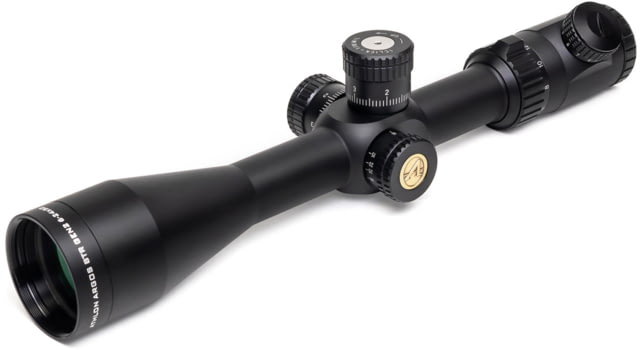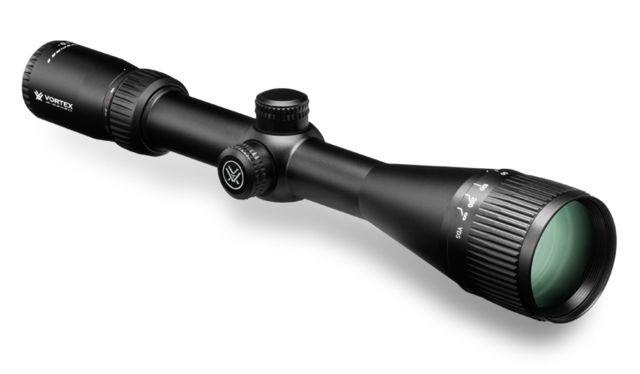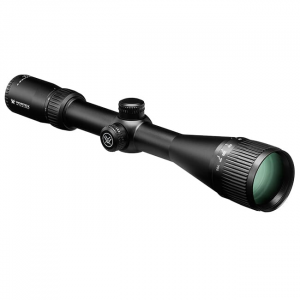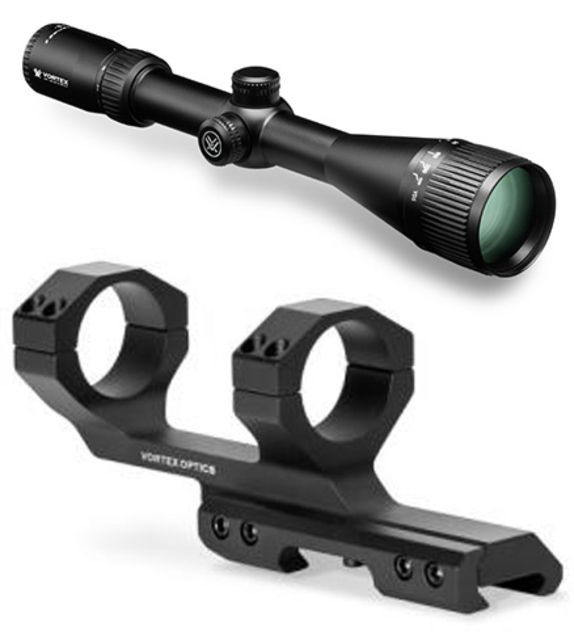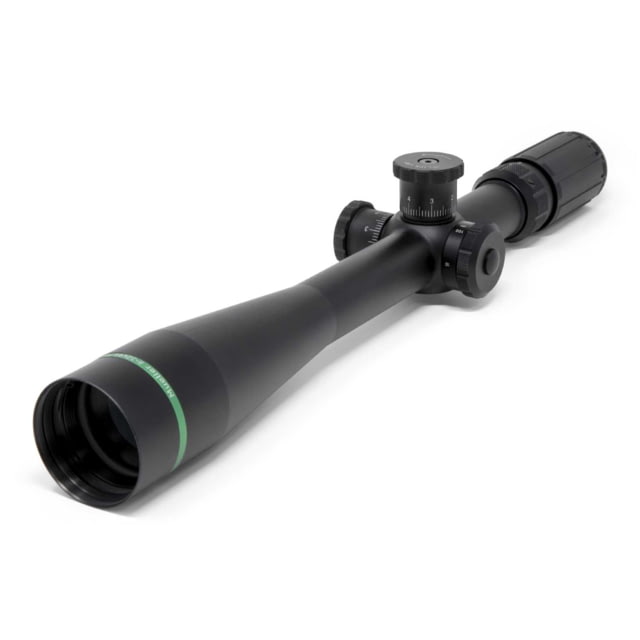As an Amazon Associate I earn from qualifying purchases. Amazon and the Amazon logo are trademarks of Amazon.com, Inc, or its affiliates.
Finding a good quality extended range scope on a limited budget can sometimes feel like hunting for a unicorn, as they can be rare and difficult to find. However, those unicorn rifle scopes do exist!
Below are my top 5 suggestions for the top long range scopes on a budget. This list is based on my own personal experiences and my 15+ years of experience working as the lead optics salesperson for the largest outdoor gear store in the United States.
Before we look at those long-range scope suggestions, we should discuss a few things that play a direct role in why and how these five scopes were selected from the thousands of rifle scopes on the market.
Power Magnification
Power magnification is a term that refers to the power ranges or fixed power ranges that the scope offers. All power ranges are identified by a multiplier number that refers to how well the average person with 20/20 vision sees with his or her naked eye. So, a scope with a 4X power means that the scope has a power range or magnification equal to 4 times the power of the naked eye.
A scope with a power range of 6-24 means that the scope has an adjustable power range that goes from a low of 6X (or six times the naked eye) up to 24X (or 24 times the naked eye).
Most people automatically assume that a “long range” scope needs to be a very high-powered scope, but that isn’t precisely accurate. I’ve seen military-trained shooters use a fixed 10X (meaning a scope that has a non-adjustable 10X power range) scope with mil-dots and hammer targets at 1000 or more.
While a higher magnification power range can be helpful at longer ranges, it’s not required. Any scope with a power range equal to or above 10X is suitable for long range shooting. Personally, I prefer a riflescope with a power range of at least 4-20 or higher, but that’s just me.
Clarity and Image Quality
Power range or magnification is essential, but so is the quality of the glass. The quality of the glass plays a significant role in the clarity and image quality you see through the scope. Lower glass quality means lower image quality.
When looking at budget-focused scopes, the trick is to find the best quality glass that you can within a specific budget range, even if it means that you have to either move down in magnification or move down in features.
It’s tough to hit a long-range target at 500 or 600 yards when the target image is blurry, out of focus, or unclear. At my day job, I always recommend that customers to buy the best glass quality they can on their budget, even if it means purchasing a lower-powered scope, as it’s hard to hit what you can’t clearly see.
Reticle Choices
The reticle is the sighting device you use to place the scope on the target. The most common reticle used to be a traditional duplex, but now, there are so many reticle variations on the market that it’s hard to keep up with all of them.
Long range targets tend to look very small, so the reticle on a long range scope can be crucial. The wrong reticle may be so big that it covers up the smaller target, while a reticle too small may be hard to see on the target.
Most long range reticles today are configured for either MOA or MILS, so it’s best to stick with a reticle designed for your preferred distance and doping. An MOA-based scope on a rifle set up with MILS isn’t going to work well.
Budget-friendly long range optics tend to offer a smaller number of reticle options, which can be a limiting factor when making a buying decision.
My favorite type of reticle for long-distance shooting is either traditional mil-dots or an MOA-built dot system. However, you can make most any reticle work for longer distance shooting, but it may involve much more trial and error shooting to figure it out.
Consistently Tracking and Holding Zero
If you are not familiar with these terms, “consistently tracking” means that the shooter can make adjustments on the scope dials to move the point of impact but then move the dials back to their original position and the scope returns to shooting its original point of impact.
If a scope will not track accurately and then return to zero, then it’s nearly impossible to shoot accurately or have any faith in the gear.
“Holding zero” is a term that refers to the scope’s ability to stay on the same point of impact over time through repeated rifle recoil and use.
A scope that will not hold zero over time is equally troublesome and can cause quite a bit of frustration when it’s gone off zero. This issue is one reason why big game hunting guides almost always ask a hunter to check their zero before leaving on a hunt to ensure that the rifle is holding zero.
Both attributes are critical in long range shooting and one reason that most long-range shooters prefer long range scopes that cost more versus less. Budget-oriented rifle scopes have a reputation in the industry for both not holding zero over time and not tracking correctly to return to zero. All the scopes that I mention in this write-up perform well in both of those areas.
SFP versus FFP
In the event that you are not familiar with these two acronyms, “SFP” is short for Second Focal Plane, while “FFP” is short for First Focal Plane. For the longest time, the Second Focal Plane models were really the only game in town, so most people are more familiar with SFP rifle scopes compared to the First Focal Plane models.
The biggest difference between the two styles is this: With a second focal plane scope, the reticle is on the second focal plane of the scope. Hence, the reticle stays the same size no matter what the magnification power is set on, versus an FFP scope where the reticle changes in size from smaller to larger as the power magnification increases.
The SFP model’s advantage is that the reticle stays the same, but it means that the reticle size requires a mathematical formula to calculate the hold-over. That formula changes based on the power as well.
The bright spot for the FFP models is the fact that the hold-over adjustments are the same throughout the power range. So, for example, a 2 mil or 2 MOA holdover with an FFP scope is the same at 8x power as it is at 20 power.
While there are a few FFP scope models that I mentioned in this write-up, most of the models recommended here are SFP models. If an FFP scope is more your speed, here’s a more complete review of top rated FFP scopes.
Recommended Budget Long Range Scopes
Scope Model | Image | Reticle Style | Focal Plane | Buy Now |
Athlon Argos BTR Gen2 6-24x50 FFP | APMR FFP IR MIL (MOA) | First Focal Plane | ||
Vortex Crossfire II 6-24x50 | Dead-Hold BDC (MOA) | Second Focal Plane | ||
Mueller Tactical 8-32x44 Side Focus | Mil-dot (MRAD) | Second Focal Plane | ||
Bushnell Match Pro 6-24x50 | Deploy MIL Reticle (MRAD) | First Focal Plane | ||
Sightron S-TAC 4-20x50 | MOA-2 (MOA) | Second Focal Plane |
So let’s dive a little deeper into each of those scopes and discuss the good, the great, and the ugly.
Athlon BTR 6-24X50 MOA (FFP) with the Illuminated APMR MIL Reticle
![]() The Athlon BTR 6-24X50 is an FFP (First Focal Plane) rifle scope built on a 30mm aluminum tube. As mentioned above, since the scope is an FFP model, the reticle changes in size (increases) as the power magnification goes up.
The Athlon BTR 6-24X50 is an FFP (First Focal Plane) rifle scope built on a 30mm aluminum tube. As mentioned above, since the scope is an FFP model, the reticle changes in size (increases) as the power magnification goes up.
The glass on this scope is pretty good for a scope in the sub $350 price range. Obviously, it’s not the best glass I’ve ever seen, but I didn’t expect that for this price range. I was, however, very surprised at the glass quality of this model.
Now I have to say that I have noticed a slight reduction in clarity and image quality at the highest magnification, but it’s not enough to bump this scope off my list.
The reticle is an illuminated MIL-based model, and it’s very visible for both day and night use. In addition to the MIL model, Athlon also offers in an MOA version.
The illumination feature is really a double-edged sword as it helps with the visibility of the reticle downrange and in low light conditions, but it comes at the cost of added weight.
The illumination components add a few ounces to the overall weight compared to a non-illuminated model. Now a little extra weight (say 6 ounces or so) may not be a big deal for some, but it may be for others if you are very weight-conscious or are running the glass on a lightweight mountain hunting rifle.
My other small complaint with this model is that the illuminated reticle does not have an auto cut-off feature. If you forget to turn the illumination off, you’ll run the battery down in about 6-8 hours, depending on where you have the illumination brightness set.
This model has a history of holding zero, even with the more punishing higher recoiling calibers, and gets very high marks for being surprisingly durable for the money.
Normally, when you think about “cheap” or “budget” optics, you equate that to a cheap product. However, I haven’t found that to be the case with this Athlon. It might not cost all that much, but you get an excellent bang for your buck.
Pros
- Good Glass (but not great)
- Very durable and well-built for the $$.
- Held zero even with heavier calibers. Comes in at a very budget-friendly price.
- Covered by Athlon’s outstanding warranty.
Cons
- Only available in an FFP configuration, which might be a turn-off if you’re a fan of more traditional SFP scopes.
- Glass does lose some clarity at max magnification and shows an ever so slight amount of flare.
- The illuminated reticle does not have an auto-shut-off feature, so the battery drains pretty quickly if you forget to deactivate the illumination. (learned the hard way).
If you’re interested in this specific Athlon scope, here are a few other places that typically offer good prices on it:
Vortex Crossfire II 6-24-50 with DEAD-Hold BDC Reticle
Although the Crossfire II series of rifle scopes is considered an entry-level scope series in the Vortex line, it certainly doesn’t perform like one.
The Crossfire II in a 6-24X50 configuration is a Second Focal Plane (SFP) scope built on a 30mm tube. When Vortex first introduced this model, it was offered in a few different reticle options. Currently, it’s only offered in Vortex’s MOA-based Dead-Hold BDC reticle.
While Vortex offers many rifle scope models with better glass and more features, the Crossfire II models are an outstanding value at this price point. The 6-24X50 model is one of the best 6-24 models in the sub $300 price range.
Of the two reticle options, I prefer the Dead-Hold BDC over the V-Plex as it offers more flexibility from a long range standpoint. Once you’ve spent a little time figuring out the specific drop for your rifle at various ranges, it’s not hard to start pinging steel at ranges out over 500 yards.
This specific scope model also features an adjustable objective that focuses all the way down to 10 yards. While that feature may not be handy for a long range shooting scenario, it does make this scope more versatile as it can be used for other situations such as hunting and competitions.
Pros
- Better than average glass (not great) for the costs.
- An adjustable objective that goes all the way down to 10 yards.
- The Dead-Hold BDC reticle is extremely versatile.
- It comes with Vortex’s outstanding lifetime warranty (which may be one of the best in the optics industry)
Cons
- The focus is located on the objective but would be easier to access if it was positioned as a side focus.
- The max windage and elevation adjustment is 40 MOA, which is good but not great. 40 MOA might be a little low, depending on your rifle set-up. If so, you’ll have to think about an MOA rail for added MOA range.
If this Vortex Crossfire 2 scope sounds interesting or you want to take a more in-depth look, here are a few I found for sale:
Mueller 8-32X44 with a Mil-Dot Reticle
Mueller Optics is a brand that has been around for several years and is best known for offering affordable scopes in a broad range of magnification powers. As a matter of fact, they advertise their brand as “a lower-cost alternative to high-performance optics!” and there’s a certain amount of truth in that.
While Mueller offers scopes in both a 1-inch and 30mm tube, this particular model in the 8-32X44 comes in a 30mm tube. While a 30mm tube weighs more than a 1-inch tube, it offers a wider range of windage and elevation adjustments compared to a 1-inch model.
This model also features a side focus adjustment that will focus all the way down to 10 yards. As mentioned before, many rifle scopes in this power range have a focus or AO that bottoms out at the 50-yard mark, so this scope focusing all the way down to 10 yards adds to its versatility.
This 8-32 model also has exposed target turrets and a fast-focus eyepiece. The exposed turrets can be both a pro and a con, depending on what type of shooting you are doing. For dedicated long range shooting, the exposed turrets are handy as they offer quick and easy turret changes. However, for hunting purposes, covered turrets are a better option as they protect the turret from any accidental or inadvertent adjustments. There’s nothing worse than taking a shot on a trophy buck, only to figure out that your turret had been accidentally changed, which changed your POI.
If you’re a fan of the higher end of magnification on a budget, then the Mueller 8-32X44 may be a scope worth considering.
Pros
- The optical quality is decent for the money.
- I’m a big fan of a mil-dot reticle for long-range.
- Handy side focus that will focus all the way down to 10 yards.
Cons
- While some shooters seem to think that the highest possible magnification is always the best, it comes at a cost, and that cost is a narrow field of view. On the max 32X power, the field of view is a mere 2.5 feet.
- There’s some obvious edge distortion and flare in the glass at maximum power, especially on bright days.
- While Mueller has a reputation as an overall good company, their warranty is somewhat restrictive with several warranty limitations.
Bushnell Match Pro 6-24×50
Although Bushnell Optics offers several excellent scopes built for long range shooting, the Bushnell Match Pro 6-24×50 is their first entry level optic that doesn’t cost north of $500.00.
This Bushnell model is a first focal plane (FFP) optic built on a 30mm tube. It also features a zero reset function that can be done without tools, and a side focus option that focuses down to 10 yards. Most long range optics don’t focus down to such a short range, but it’s a useful option to have.
Bushnell only offers one reticle option on the Match Pro, and it’s Busnell’s Deploy MIL reticle. When the Match Pro was first introduced, it was only available with a non-illuminated reticle. Now, Bushnell offers this scope in non-illuminated and illuminated reticle. The Deploy reticle is a Christmas tree style reticle with holdover and wind drift marks.
I’ve found the Match Pro optical quality to be a surprisingly good for an entry level long distance optic. In addition, I love the target turrets on this model that are built on a base 10 system for fast and accurate dialing.
Pros
- Good optical quality for the cost.
- Side focus that adjusts down to 10 yards.
- It tracks and hold zero well.
- The reticle is ideal for long range shooting.
Cons
- While I like the Deploy MIL reticle, it’s a very fine reticle. As such, it’s not ideal for low light shooting (like a dark, overcast day).
- I wish Bushnell offered the Match Pro in other reticle options, including an MOA variant.
- Typical pricing puts it at the top end of the “budget” scale.
Sightron S-TAC 4-20X50 with the MOA-2 Reticle
![]() You most likely won’t see this particular Sightron model listed in other places as a viable candidate for long range glass on a budget, and that’s really a shame, as I think this is a fantastic scope for the money.
You most likely won’t see this particular Sightron model listed in other places as a viable candidate for long range glass on a budget, and that’s really a shame, as I think this is a fantastic scope for the money.
This model is built on a 30mm tube with a 50mm ocular bell. It features a few what I call higher-end features that you don’t typically see in the sub $350 price range, such as:
- Side focus that goes all the way down to 10 yards
- Fast focus eyepiece
- Great reticle for long range shooting
- Well-built controls
The MOA-2 reticle is a Sightron proprietary design and features an MOA dot surrounded by mil-hash marks. While the design sounds simplistic, it’s also very effective.
I’ve got one of these mounted on a .22 bolt gun I use for precision tactical shooting, and I can consistently hit the smaller metallic animal plates at distances out to 150 yards without any issues.
Although this scope is manufactured in the Philippines, it’s produced at a facility that is controlled by Sightron.
I’ve always felt that the S-TAC in a 4-20 configuration with the MOA-2 reticle is one of the best budget long range scope models on the market today.
Pros
- Well above average glass for the money.
- Well thought out controls.
- Excellent reticle for long range shooting.
- Good power range for mid to long range shooting applications.
- Built like a tank.
Cons
- A bit on the heavy side.
- The side focus adjustment is not marked in terms of distance.
- The reticle is really designed for distance shooting, so it’s not that versatile.
- I’m just nit-picking, but this scope does not come with a sunshade. The sunshade must be purchased separately.
FAQS
In addition to the suggestions above, here are some of the more common questions that I see or hear about long range scopes on a budget:
Where can I find a 1000 yard scope on a budget?
To be completely honest, any of the scope models that I’ve mentioned above could certainly be considered a 1000 yard scope on a budget. While each person’s definition of “long range” may vary, most people consider the term “long range” to mean shooting at distances of 800 to 1000 yards.
Now, I obliviously don’t really know what your actual budget may be, but all the scope models above are pretty budget-friendly.
What would you recommend as the best budget scope for long range shooting?
I’d have to say that the Sightron S-TAC and the Vortex Crossfire II models I mentioned above would be my suggestions for the best budget scope options for long range shooting.
Now, certainly, there are other scope models that might fit that bill as well, but those would be the top two based on the quality of the glass, features, and performance for the price.
Can you suggest or recommend a good but cheap 1000 yard scope?
I’ve always hated using the word “cheap” as it has more than meaning. For some, it means less expensive or less costly, and others equate the word to low quality and poorly made.
That being said, if you forced me into a corner and made me answer that question, I’d say that the Vortex Crossfire II in a 6-24X50 configuration is certainly a good and cheap 1000 yard scope. Just be clear here, I’m talking about “cheap” as in costs and not quality as the Vortex Crossfire II is really well made for the money.
So that wraps up my suggestions for long range optics on a budget. Obviously, the recommendations mentioned above are just suggestions, and they don’t represent the entire range of “budget-friendly” optics that might work for long range shooting.
I’ve been working in the firearms and sporting optics industry for over 20 years, with a personal and professional interest in all things related to rifle scopes, Through a combination of work experience, formal training, and personal experiences, I have extensive experience mounting, testing, and evaluating different rifle scope models across most major optical brands.
